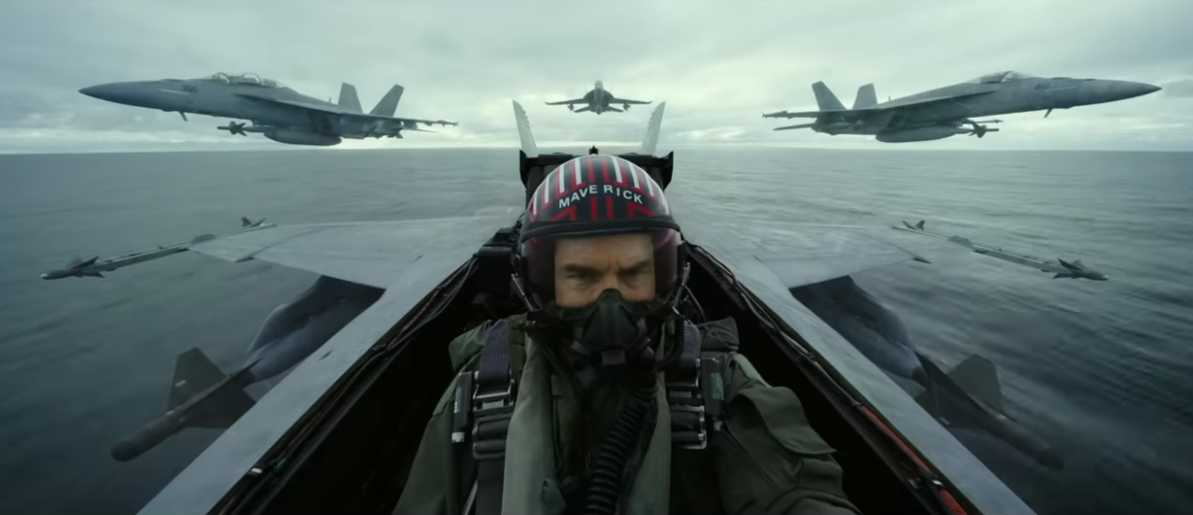
Late last week, as the official motion picture trailer for “Top Gun: Maverick” raced around social media, among the questions without easy answer was how was Pete “Maverick” Mitchell still feeling the need for speed as a 57-year-old captain with 30-plus years of service?
Paramount Pictures hasn’t released much about the plot of what will presumably be a summer 2020 blockbuster, and all fans have to go on are film industry site IMDB and what’s in the trailer released last week. However, the trailer addresses how odd it would be to have a captain in his late 50s when his peer group would have either made flag officer or hit the statutory retirement of 30 years of service.
In the trailer, Ed Harris’ character, an unidentified rear admiral, gives a brief overview of Maverick’s career.
“Thirty-plus years of service. Combat medals, citations, the only man to shoot down three enemy planes in the last 40 years. Yet you can’t get a promotion, you won’t retire, and despite your best efforts you refuse to die,” he said.
“You should be at least a two-star admiral by now. Yet here you are. Captain. Why is that?”
Could a real-world Capt. Mitchell still fly missions 33 years after audiences first saw the iconic naval aviator buzz control towers in the 1986 blockbuster “Top Gun”?

The short answer is yes, the Navy Personnel Command told USNI News on Monday. However, the scenarios run from unlikely to far-fetched.
The most straightforward answer to have a captain with 35-plus years of service is for the captain to have previous enlisted experience. In the case of Maverick, this scenario doesn’t fit with the movie’s timeline – Maverick was a lieutenant in 1986.
Another possible scenario occurs if there’s a break in service. For instance, perhaps at some point after the famous incident involving MiGs of uncertain origin over the Indian Ocean, as depicted in the first “Top Gun,” Maverick left active duty and did some time in the Navy Reserve. Then later, he returned to active duty. With more than five years in the reserves, Maverick could be pushing 37 years in uniform.
The final scenario for Maverick would be if he were retired but retained in service, a scenario that keeps individuals in uniform after reaching their statutory retirement. Generally speaking, cases of individuals being retired but retained are rare, but not unheard of, according to Naval Personnel Command.
While the longevity of Maverick’s career in uniform would be rare, recent changes to personnel regulations make it more possible for such a career path. Included in the Fiscal Year 2019 National Defense Authorization Act are changes allowing service branches to extend the active duty service of individuals based upon needs of the service and board action, according to the Naval Personnel Command. This scenario probably does not apply to Maverick because of his mandatory retirement time that occurred years ago. The changes do create a plausible scenario in the future for individuals with special skills to remain in uniform longer.
The Navy does have a few instances where individuals did serve long past their mandatory retirement.
Rear Adm. Grace Hopper, a pioneer in computer science, retired from the Navy Reserve in 1966 as a commander at the age of 60. She was recalled to active duty in 1967 and served for 19 years, ultimately retiring in 1986 at the rank of rear admiral. At the time of her retirement, Hopper, then 79, was the oldest commissioned officer in the Navy.
Adm. Hyman Rickover, regarded as the father of the nuclear Navy, was nearly forced to retire as a captain. Rickover was passed over twice for flag officer before being promoted, reportedly after the Senate Armed Services Committee pushed for Rickover’s promotion. He continued serving before retiring in January 1982, nearly 60 years after graduating from the U.S. Naval Academy.





